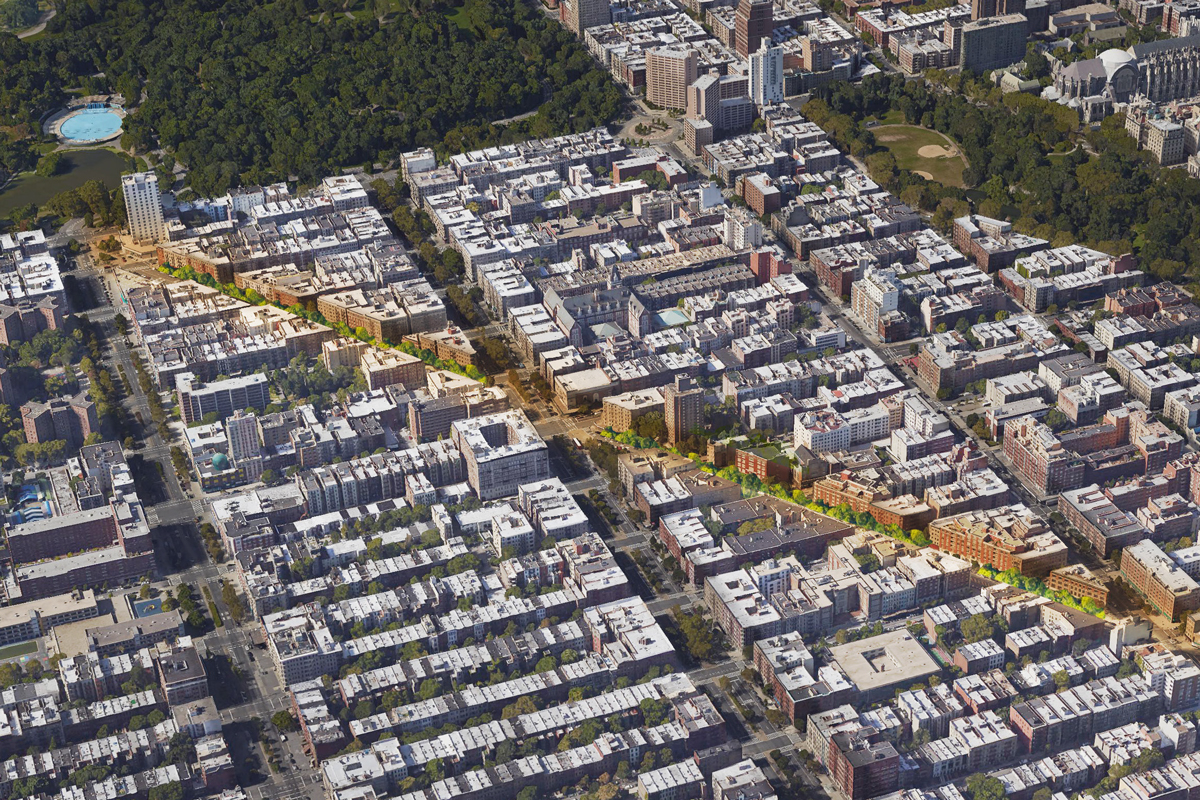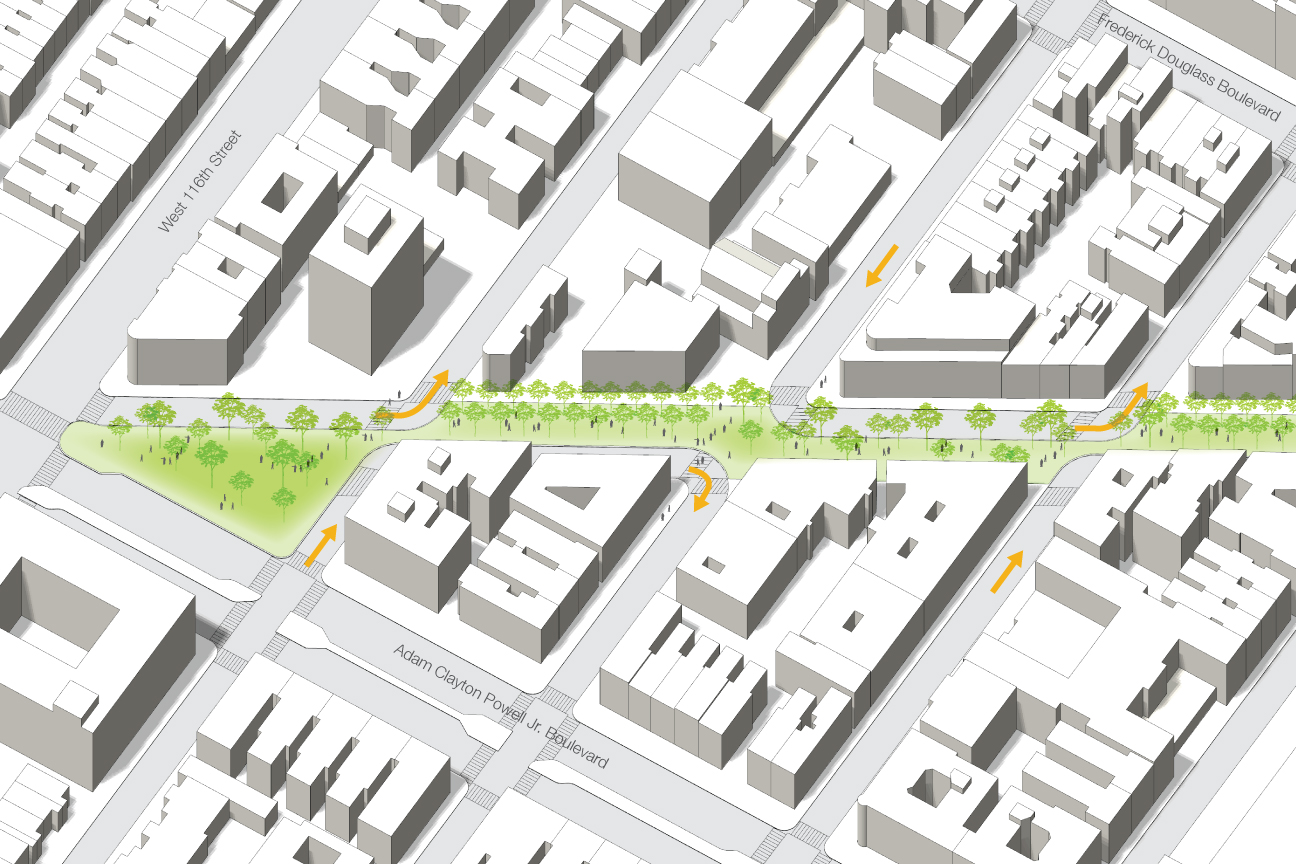
Running from Central Park to 125th Street, the southern end of St. Nicholas Avenue is a hundred-foot-wide, drab, and underutilized roadway only needed for access and deliveries to adjacent buildings. It is now nothing more than diagonal interruption of New York City’s functional rectilinear street grid. Over the past two decades, the City has devised a number of effective strategies for reclaiming the public realm along another diagonal artery—Broadway. It’s time we do the same in Harlem!
St. Nicholas Avenue today is a largely unnecessary traffic corridor. Imagine it as a 3/4-mile long park running through Upper Manhattan: Harlem Lane reborn.
We should transform this corridor into a pedestrianized, tree-lined boulevard by eliminating all through traffic and redesigning the avenue for strolling, shopping, bicycling, and playing. I propose redirecting local traffic into a one-way loop system that alternates from east to west on successive blocks, providing vehicular access to every building front and leaving room for the remaining area to become a winding, 71-foot wide green space—a strictly pedestrian precinct.
The avenue would be renamed Harlem Lane, as it was once known, and rezoned to permit new residential, institutional, and commercial uses in the buildings along it. With minimal physical changes—new paving, trees, and street furniture—we could tie together the disparate activities and people occupying the neighborhoods on both sides of this artery. Over time, these property owners and businesses would invest in the rehabilitation of their apartment buildings, introduce ground floor retail, and, in the few places where development opportunities exist, construct new housing.

(Alex Garvin and Owen Howlett)
We could create a continuous, tree-lined walkway stretching from 110th to 125th street—a 3/4-mile long park that would transform the neighborhood—without demolishing a single building. A once and future Harlem Lane.
–